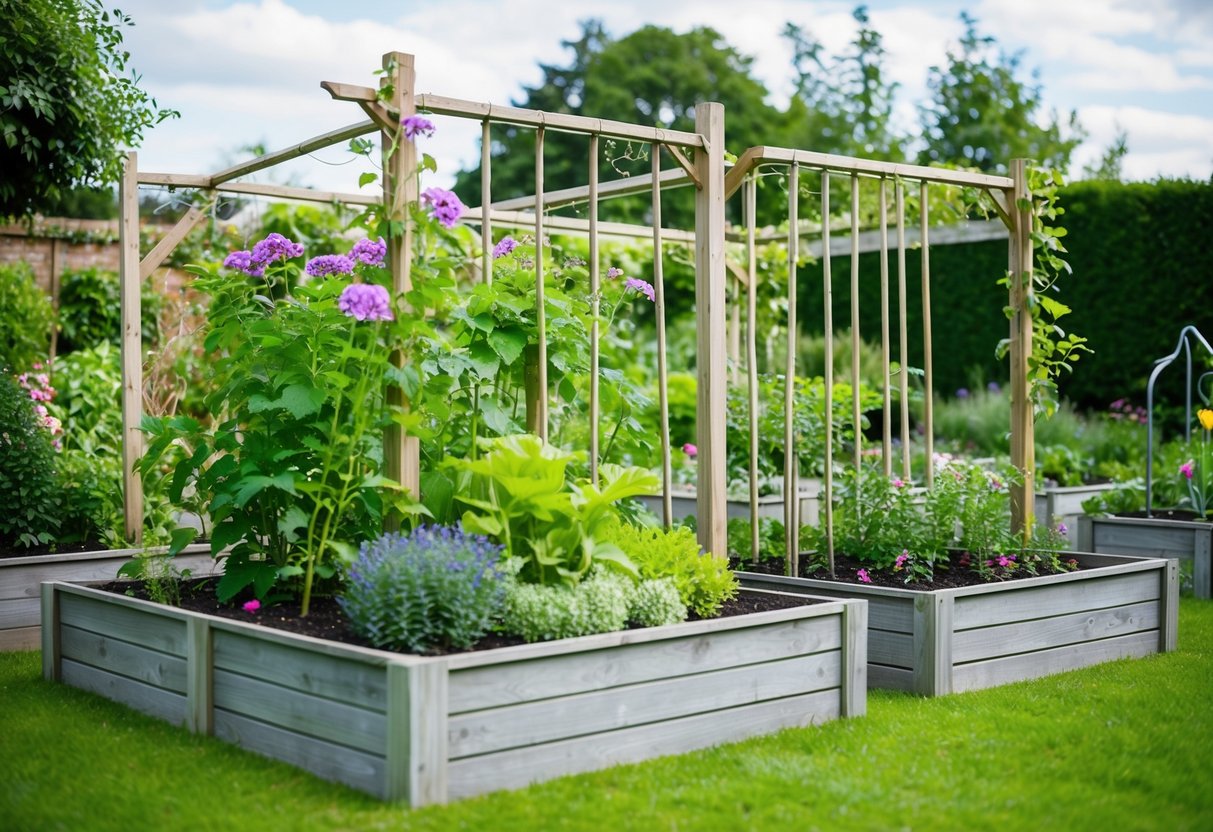
Maximizing Garden Productivity
Harnessing the full potential of your garden involves strategic plant placement and the innovative use of vertical space. By thoughtfully arranging plants and incorporating structures like trellises, gardeners can optimize both space and yield.
Effective Plant Arrangements
Arranging plants effectively can significantly enhance garden productivity. Companion planting, where certain plants are paired for mutual benefit, often deters pests and improves growth. For instance, pairing tomatoes with basil can repel insects that damage the tomato plants.
Utilizing elevated garden beds further aids in controlling soil quality and drainage. This setup is particularly useful in vegetable gardens, where ample sunlight and fertile soil are crucial for growth. Elevated beds also lessen soil compaction, allowing roots to develop freely.
Incorporating flowering vines around garden benches or pathways adds aesthetic appeal while saving space. Their vertical growth habit makes them perfect companions for other plants, helping to maximize land use.
Vertical Gardening with Trellises
Vertical gardening with trellises is a strategy to increase garden efficiency by elevating plants off the ground. Trellises support climbing plants such as cucumbers, peas, and beans, enabling them to grow upward. This technique improves air circulation and sunlight exposure, reducing pest infestations and promoting healthier growth.
Trellis gardening also makes harvesting easier. Plants grown vertically allow for simpler access, leading to less labor-intensive maintenance. Integrating trellises in smaller spaces maximizes available area, ideal for both urban gardens and expansive vegetable plots.
Incorporating diverse plant varieties on trellises, including flowering vines, enhances both functionality and visual appeal. This method not only increases productivity but also creates a captivating garden environment.
Maintaining Your Garden Structures
To keep garden structures like trellises and raised beds in good condition, regular maintenance is essential. This includes protecting them from weather damage and ensuring they stay both functional and attractive throughout the year.
Protecting Wood and Metal Elements
Wooden and metal garden structures require specific care to withstand weather conditions. For wood, applying a sealant or stain can protect against moisture and pests. It’s important to reapply these coatings every couple of years.
Metal elements, such as those found in trellises, can be protected from rust with regular paint or protective coatings. Check for rust, especially in damp environments, and use a wire brush to remove any corrosion before refinishing. Using rust-resistant paints can extend the lifespan of metal structures significantly.
Seasonal Care and Repair Tips
Different seasons pose unique challenges to garden structures. In winter, it is vital to check for accumulated snow or ice on trellises since their weight could cause damage. During wetter months, pay attention to drainage issues around raised beds to prevent waterlogging which can destabilize the structure.
Spring is a suitable time for inspecting and making necessary repairs. Addressing wobbly trellis posts or repairing wooden raised beds is essential. Adding compost to raised beds at the start of the growing season can improve soil quality and help mitigate erosion around the structure. Regular seasonal checks ensure the durability and functionality of garden structures throughout the year.